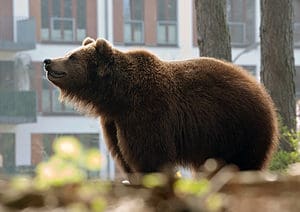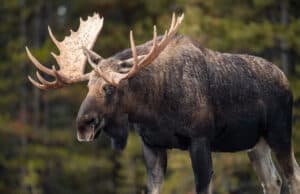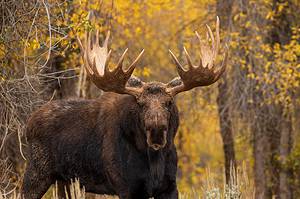Colorado’s Parks and Wildlife Department says there are over 3,000 moose in Colorado today, a dramatic increase from just a few wanderers in the 1970s. A hugely successful introduction program has boosted moose numbers so high that limited hunting is available. In 1978, just 12 moose arrived in North Park, then, a year later, 12 more. Moose certainly suit the state, so let’s take a look at the top eight best places to see moose in Colorado.
1. State Forest State Park – Walden

State Forest State Park is Colorado’s moose capital.
©ArtBBNV/Shutterstock.com
71,000-acre State Forest State Park provides a rugged habitat for over 600 moose, so the chances of spotting one are very high here. In fact, it’s dubbed the official moose capital of Colorado. Most of its natural beauty centers around around North Michigan Reservoir, a thirsty moose stop-off point.
Hikers and mountain bikers chiefly follow the popular trails to spot moose. Lake Agnes Trail is 2.3-miles long, but if you fancy a longer day out, try the 7-mile American Lakes Trail to Michigan Lakes, then camp on one of State Park’s five camping grounds. Be sure to visit Colorado State Forest’s Moose Visitor Center to discover recent sightings and safety tips.
2. North Park, Colorado
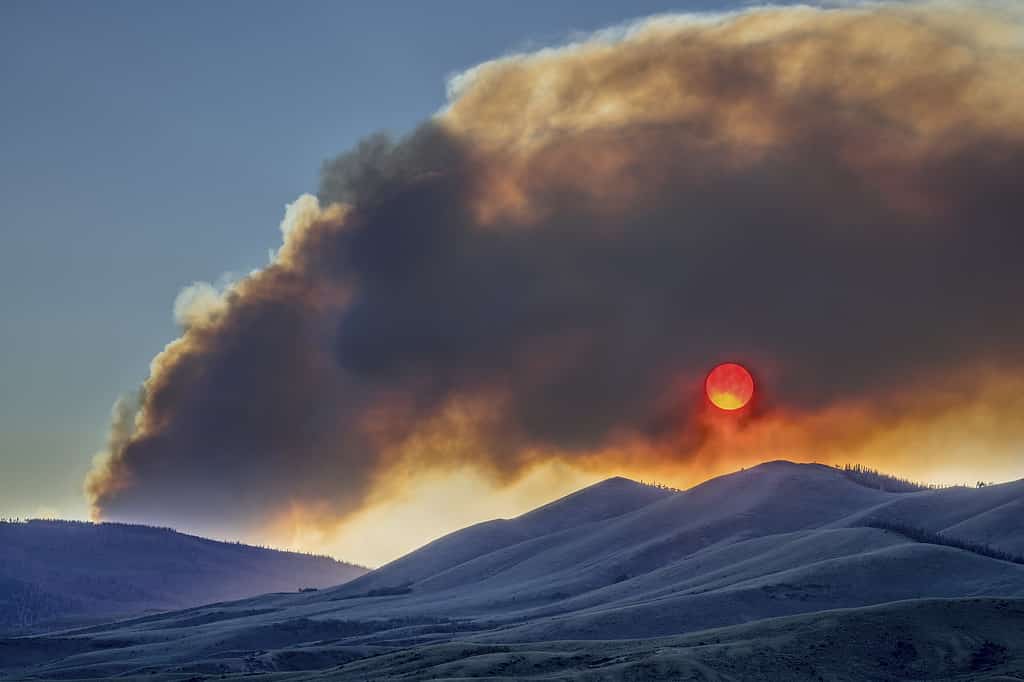
North Park, Colorado is an isolated mountain valley.
©marekuliasz/iStock via Getty Images
Near the Colorado-Wyoming border lies North Park. It’s a large, isolated mountain valley that supports a vast ecosystem. As well as numerous moose, the upland areas host pronghorns, mule deer, prairie dogs, coyotes, and jackrabbits.
The Illinois River and vast shrublands of North Park attract moose because they love wetland’s aquatic vegetation. North Park’s essential elements provide isolation, food, and water to a magnificent moose population. Visitors spot moose browsing the willows throughout its rugged terrain and crossing the roads in Jackson County.
North Park offers limited moose hunting.
3. Brainard Lake Recreation Area

Brainard Lake is often under snow until July.
©Images by Dr. Alan Lipkin/Shutterstock.com
Another top place to spot moose in Colorado is Brainard Lake, located in the Indian Peaks Wilderness near Nederland.
Its stunning lakes and meadows house plentiful moose numbers, who spend time grazing the lush lakeside grass. This epic recreation area is a glacial valley, carved from the rocks by glacier movement thousands of years ago. The main lake offers top-quality fishing and the surrounding subalpine forest provides habitats to numerous creatures aside from moose, such as coyotes and mule deer.
Brainard Lake area’s elevation means snow often remains on the ground until July, so go prepared.
4. Arapaho National Wildlife Refuge

Moose live in protected Arapaho National Wildlife Refuge.
©Gary Gray/iStock via Getty Images
A 35-mile wide by 45-mile-long section of North Park called Arapaho National Wildlife Refuge is protected. Founded in 1967 to protect waterfowl, it’s an intermountain glacial basin that’s difficult to hike, but moose take full advantage of its sagebrush steppe lands, willow riparian areas, wetlands, and meadows.
If you’d like to visit, try one of the self-driving moose spotting tours, or follow the wetland nature trail. At sunset, moose are often spotted at the southern end of the trail.
5. Steamboat Springs
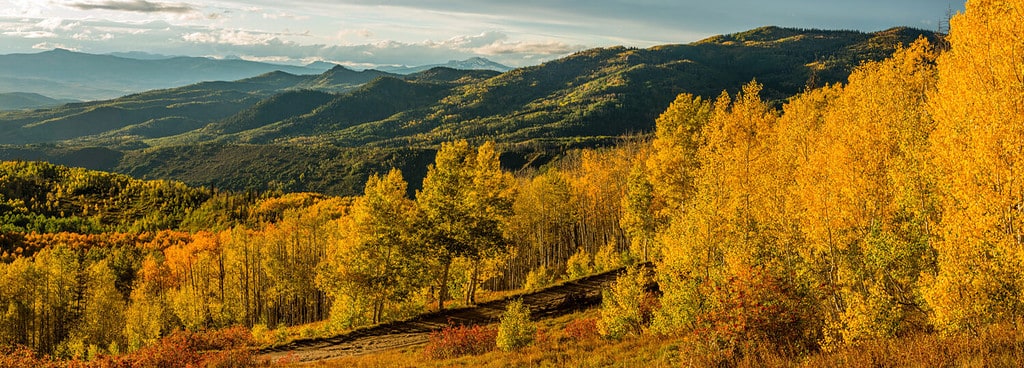
Routt National Forest neat Steamboat Springs turns into Medicine Bow National Forest in Wyoming.
©Sean Xu/Shutterstock.com
In northwest Colorado, Steamboat Springs city is a good place to stop for moose spotting. 1.25 million acres of Routt National Forest’s wilderness is only a short drive away.
Routt National Forest doesn’t end with the Colorado border, it extends into Wyoming where it’s called the Medicine Bow National Forest. The moose don’t mind what state they’re in. Most spend time in the high alpine forests and flower-strewn meadows, alongside mule deer and bears.
6. Rocky Mountain National Park
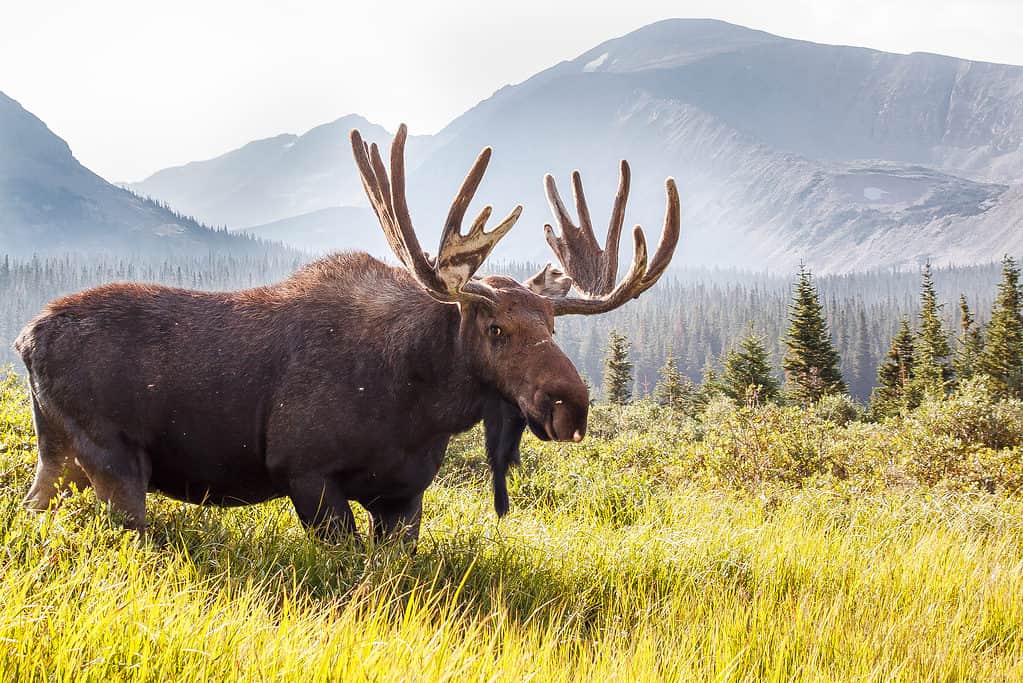
Rocky Mountain National Park in Colorado homes moose, mule deer, coyotes, and bears.
©Michael Liggett/Shutterstock.com
Reports suggest that after the State Forest, Rocky Mountain National Park is the next best place to spot moose. They’re common on the western edge, and Highway 34, through Kawuneeche Valley, is well known for its leisurely moose road crossings. Rangers say early mornings and late evenings are prime moose spotting times.
The Colorado River winds its way through Rocky Mountain Park, so the whole area is well nourished and perfect for large land grazers like moose and mule deer, plus their coyote and bear predators. It’s one of the highest national parks with elevations of 14,259 feet in places. It contains 60 mountain peaks and the Continental Divide runs north-south through the center.
7. Grand Meso National Park

Grand Meso National Park homes over 400 moose.
©equigini/iStock via Getty Images
In the 2000s, Colorado Parks and Wildlife introduced moose to Grand Meso National Park. They’ve thrived there, and today over 400 moose are found in the forested areas, chiefly near its 300 lakes.
Grand Meso is the world’s largest flat-topped mountain. It’s packed with epic wildlife and a real paradise for outdoor lovers. Hike, bike, camp, fish and hunt there (with permits) and you’ll barely see another soul, just wandering moose.
8. Vail Valley
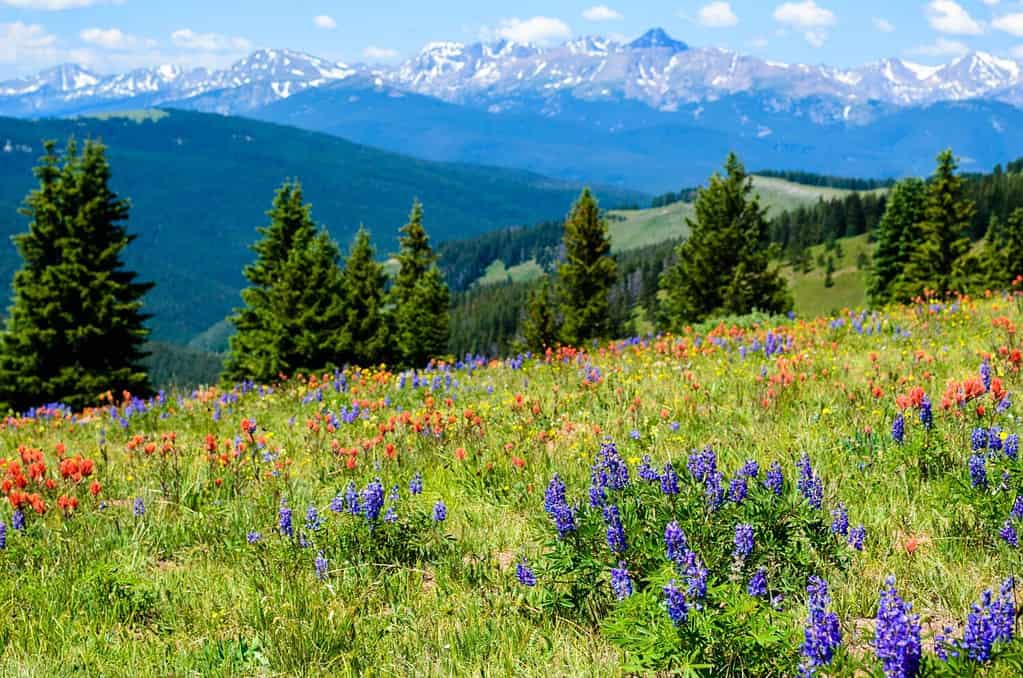
Moose eat grasses and wildflowers from Vail Valley’s meadows.
©Danica Chang/Shutterstock.com
In the Vail Valley, especially Beaver Creek and Edwards, moose graze near lakesides and marshes. Wildlife officers think they arrive in Vail from North Park, walking along the Colorado River and Piney River.
A moose sighting is a good bet in Vail Valley, but if you’re not lucky, moose viewing tours run from Vail town center to Piney Lake, which is prime moose viewing real estate, in the spring months. Before spring, it’s too snowy to get there safely.
How To Safely Watch Moose in Colorado
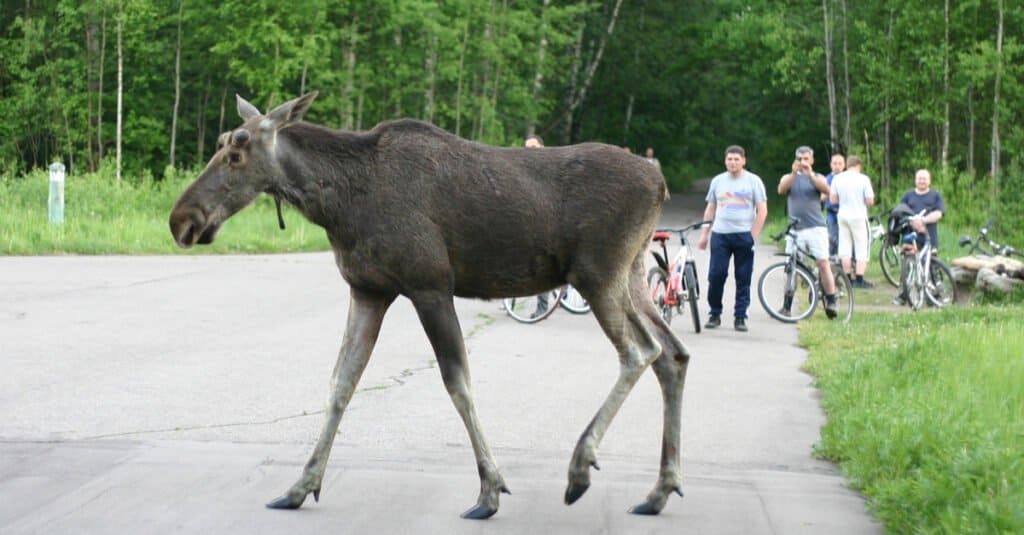
Moose spotters should keep their distance from wild moose.
©MarkMark/Shutterstock.com
Moose walk slowly and chew leaves in a docile manner, but these wild animals are unpredictable and very strong. They weigh up to 1,200 pounds and stand six feet at the shoulder, so all moose tourists need to keep their distance.
As soon as one changes its behavior, you’re standing too close.
Here are some warning signs:
- Licking its snout
- Lowering its head
- Raising hair on the back of its neck
- Pinning back its ears
- Snorting and snuffling
If a moose displays these signs, you are too close. Back away slowly in the direction you approached and stay calm. If a moose chases you, get behind a solid object like a car or tree. If it knocks you down, curl into a ball and protect your head. Furthermore, moose do not like dogs. Not only do dogs scare moose into running, they may aggressively charge at your pet and create a dangerous situation.
In general, moose are not aggressive animals, they don’t hunt or have a natural instinct to chase. Colorado’s wildlife officers encourage moose viewing in a safe manner that keeps everyone from harm.
Thank you for reading! Have some feedback for us? Contact the AZ Animals editorial team.





